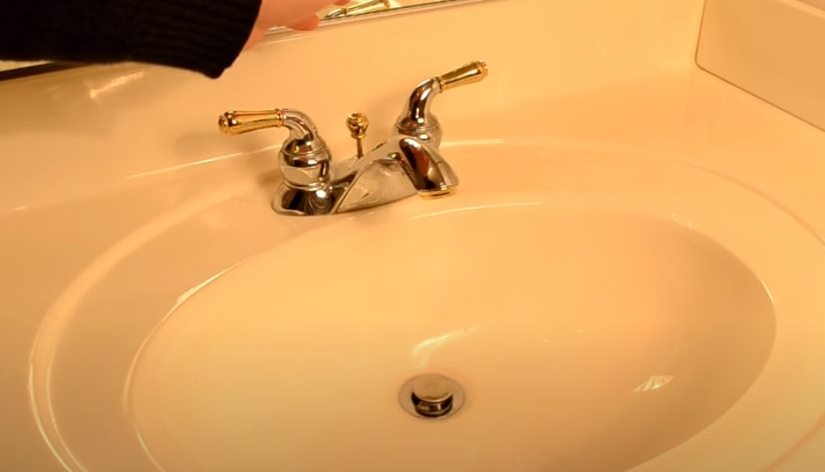Are you frustrated with a sink stopper that just won’t stay up? You’re not alone. A malfunctioning sink stopper can be a major inconvenience, affecting your daily routine and causing unnecessary stress.
In this comprehensive guide, we will delve into the common reasons why sink stoppers fail to stay up and provide you with expert troubleshooting tips and solutions to resolve the issue. Say goodbye to sink stopper woes and regain control over your bathroom or kitchen sink!
Understanding the Problem
Understanding the underlying reasons behind sink stopper that won’t stay up is the first step towards finding a lasting solution. In this section, we will explore the common culprits behind sink stopper failures and shed light on why they refuse to remain in the raised position.
1. Damaged or Worn-out Stopper
One of the primary culprits behind a sink stopper that won’t stay up is damage or wear and tear. Over time, the stopper’s mechanism can become worn-out or damaged, preventing it from holding the upright position. Common issues include bent linkage, corroded parts, or a deteriorated stopper body.
2. Misaligned Stopper Assembly
Sometimes, a misaligned stopper assembly can cause it to slide down instead of remaining in the raised position. This misalignment can occur due to improper installation or accidental movement of the linkage connecting the stopper to the lift rod.
3. Water Pressure and Flow
Another factor that can affect the performance of a sink stopper is the water pressure and flow. In cases where the water pressure is too high, it can push the stopper down, overcoming its ability to stay in the raised position. Additionally, a rapid flow of water can create turbulence, causing the stopper to dislodge.
Troubleshooting Tips and Solutions
Now that we’ve identified the common reasons why sink stoppers fail to stay up, let’s explore some effective troubleshooting tips and solutions to resolve the issue.
Inspect and Replace Damaged Parts
If you suspect that a damaged or worn-out stopper is causing the problem, it’s crucial to inspect the various components of the stopper assembly.
Check for any visible signs of damage, such as bent linkage, corrosion, or wear on the stopper body. If necessary, replace the damaged parts with high-quality replacements to restore the stopper’s functionality.
Adjust the Stopper Assembly
In cases of misalignment, adjusting the stopper assembly can help it stay in the raised position. Start by locating the lift rod underneath the sink and ensure it is properly connected to the stopper’s linkage.
If it appears loose or disconnected, reattach it securely. You can also adjust the length of the lift rod to achieve the desired height for the raised stopper.
Regulate Water Pressure
If excessive water pressure is causing the sink stopper to dislodge, regulating the water pressure can be a simple yet effective solution. Install a pressure regulator valve or contact a professional plumber to assess and adjust the water pressure in your home.
By maintaining an optimal water pressure level, you can prevent the stopper from being forced down by the water flow.
Clean and Lubricate the Stopper Mechanism
Accumulated debris, soap scum, and mineral deposits can hinder the smooth operation of a sink stopper. Regular cleaning and lubrication of the stopper mechanism can help restore its functionality.
Remove the stopper from the drain and clean it thoroughly using a mild detergent or vinegar solution. Lubricate the moving parts with a silicone-based lubricant to ensure smooth movement and prevent sticking.
Consider Professional Assistance
If you’ve tried the troubleshooting tips mentioned above and your sink stopper still won’t stay up, it may be time to seek professional assistance. A licensed plumber can assess the issue more comprehensively, diagnose any underlying problems, and provide appropriate solutions tailored to your specific sink configuration.
FAQs
Is a sink stopper necessary?
Yes, a sink stopper is necessary for various reasons. It helps prevent water from draining out of the sink, allowing you to fill it with water for various tasks such as washing dishes or personal hygiene. Additionally, a sink stopper can also help prevent debris or small items from falling into the drain, potentially causing clogs.
Why won’t my sink stopper hold water?
It could be due to a damaged or worn-out stopper mechanism, a misaligned stopper assembly, or inadequate sealing between the stopper and the drain. Additionally, excessive water pressure or a clogged drain could also prevent the stopper from effectively holding water.
Conclusion
A sink stopper that refuses to stay up can be a frustrating problem, disrupting your daily routine and causing inconvenience. However, armed with the knowledge and troubleshooting tips provided in this article, you can now tackle the issue head-on.
Remember to inspect and replace damaged parts, adjust the stopper assembly, regulate water pressure, clean and lubricate the mechanism, and seek professional help if needed. By following these steps, you’ll be able to restore the functionality of your sink stopper and enjoy a hassle-free experience in your bathroom or kitchen.
